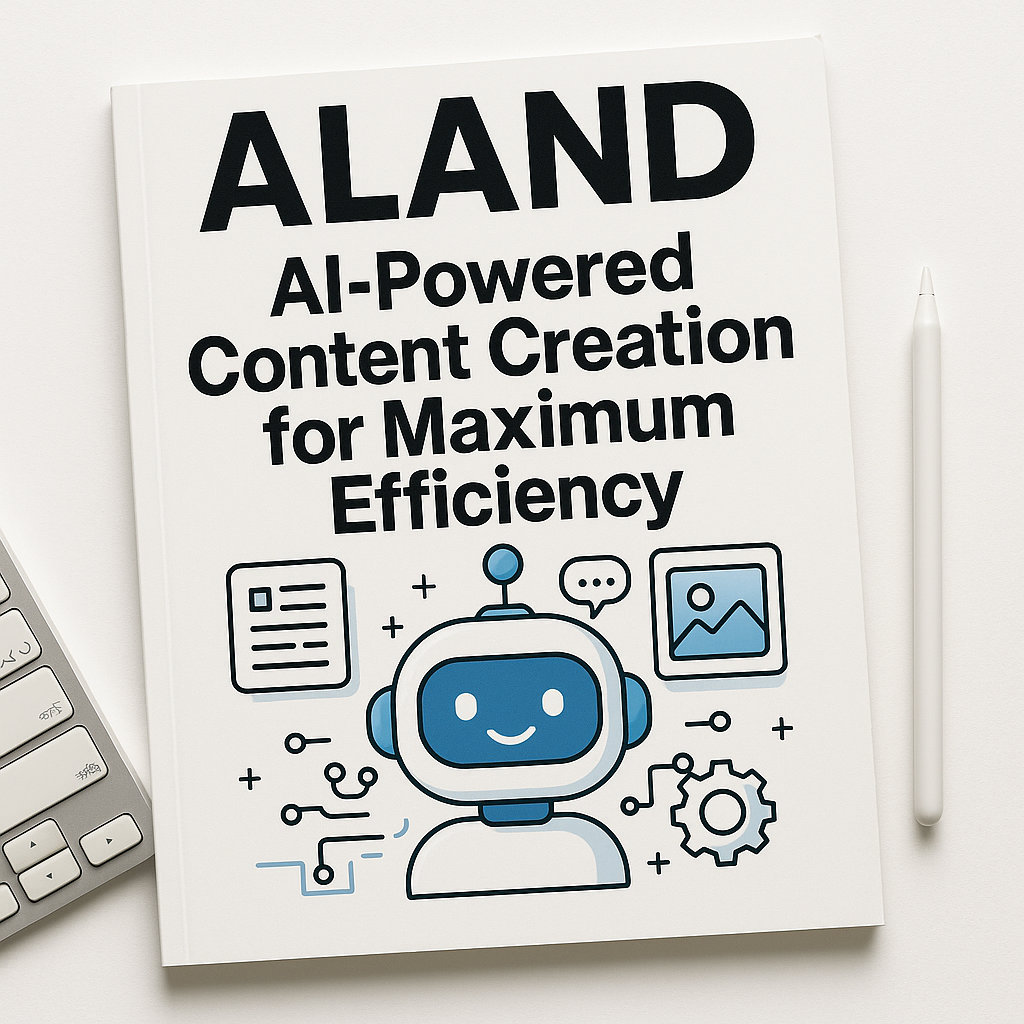AI-Powered Content Creation for Maximum Efficiency
- Published Date: 7th Jun, 2025
-
4.9★ ★ ★ ★ ★(119)

Listen to the Spotify Podcast for this article
By Dr. Pooyan Ghamari, Swiss Economist and Founder of the ALand Platform
Why the New Content Battleground Belongs to the AI-Enabled
The modern business landscape is defined by an accelerating paradox: the world has never needed more content, nor has it ever been so saturated with it. Every organization—from global investment firm to boutique real estate consultancy—now faces a relentless pressure to create, distribute, and refine their messaging at an industrial scale.
But the traditional model of content production is failing. Human teams are overextended. Creative cycles lag behind market changes. And costs spiral as demands grow.
The inflection point has arrived.
Artificial intelligence is transforming content creation from a labor-intensive function to a scalable, data-driven strategic advantage.
This transformation is not just about saving time. It’s about building an adaptive content ecosystem that responds instantly to market signals, maintains brand quality, and allows your business to punch far above its weight in crowded digital markets.
As a global economist and founder of a cross-continental investment platform, I’ve seen firsthand how AI-powered content creation is reshaping the rules for efficiency, growth, and influence. In this article, I’ll outline a step-by-step blueprint—tested in high-stakes markets—for leveraging AI to drive results without sacrificing humanity.
The Efficiency Revolution: From Manual Output to Intelligent Systems
The Cost and Opportunity of Repetition
For decades, content teams have been bogged down by repetitive tasks: drafting email sequences, writing similar blog posts, reformatting case studies, or repurposing reports for social media. These activities are essential, but they burn out creative talent and divert attention from strategic work.
AI is a force multiplier precisely because it thrives on repetition.
Instead of reducing quality, it turns every recurring task into an opportunity for innovation, speed, and continuous learning.
AI’s Real Value: Augmentation, Not Replacement
Critically, the future isn’t “robots versus humans”—it’s intelligent collaboration. AI excels at generating drafts, synthesizing data, and maintaining consistency. But the highest-performing organizations pair this with human editors who inject narrative, context, and emotional intelligence.
Wizard Action Plan: Five Steps to AI-Powered Content Mastery
1. Audit All Repetitive Content Production Tasks
How to execute:
-
List every recurring content deliverable: blogs, newsletters, product updates, FAQs, social posts, client reports, proposals, etc.
-
Identify processes that follow similar structures, language, or objectives.
-
Quantify the time spent on each task monthly or quarterly.
-
Prioritize tasks that are low-differentiation but high-frequency for automation.
2. Test AI Writing Tools for Blog Drafts, Emails, and Social Posts
How to execute:
-
Select leading AI tools with proven results (e.g., ChatGPT, Jasper, Copy.ai).
-
Assign each tool to specific formats (blogs, cold emails, LinkedIn posts, product descriptions).
-
Compare AI-generated drafts to human baselines for clarity, relevance, and tone.
-
Solicit feedback from team members: Where does AI excel? Where does it falter?
3. Build Prompt Libraries for Your Brand’s Key Messages
How to execute:
-
Catalog your most important brand messages, tone guidelines, and positioning statements.
-
Write prompts that instruct the AI to generate content in your desired style (e.g., “Write a friendly, authoritative explainer on…”).
-
Save high-performing prompts for repeated use, refining them as you gather data on results.
-
Share prompt libraries across teams so everyone can benefit from best practices.
4. Train Your Team to Edit and Humanize AI-Generated Content
How to execute:
-
Educate staff on the strengths and limitations of AI content.
-
Create editorial checklists: accuracy, brand fit, readability, cultural sensitivity, ethical standards.
-
Assign dedicated editors or “humanizers” to every AI-generated piece.
-
Encourage collaborative workflows—let humans reframe, personalize, and inject narrative.
-
Reward editors who find creative ways to elevate AI drafts.
5. Set Up Automated Publishing Schedules with Performance Triggers
How to execute:
-
Integrate AI content creation with platforms like HubSpot, Buffer, Hootsuite, or native scheduling tools.
-
Define publishing cadences (daily, weekly, monthly) for each channel.
-
Establish performance triggers: if a post exceeds engagement targets, auto-republish or amplify; if it underperforms, auto-pause or revise.
-
Use analytics dashboards to monitor KPIs: opens, clicks, shares, conversions, lead generation.
The Strategic Impact: AI as a Force Multiplier for Competitive Advantage
- Hyper-Efficiency:AI-driven processes allow even lean teams to dominate content-heavy industries, outpacing larger competitors mired in manual workflows.
- Consistency and Scale:Automated, AI-assisted content maintains message discipline across languages, regions, and market segments—crucial for global brands and regulatory environments.
- Data-Driven Evolution:Real-time analytics feed back into prompt libraries and content calendars, closing the loop for perpetual improvement.
- Human Creativity Unleashed:With AI handling the repetitive, your best people focus on big-picture thinking, deep research, and creative problem-solving.
AI Is the New Content Infrastructure—But Humanity Is Still the Engine
The future of business content belongs to those who build agile, AI-powered systems—without losing the distinctly human touch that builds trust, moves hearts, and wins markets.
AI is not a shortcut for quality, but a platform for unleashing your team’s highest value. Those who learn to wield it with intelligence, discipline, and creativity will define the next era of digital business.
About the Author
Dr. Pooyan Ghamari is a Swiss Economist, global strategist, and Founder of the ALand Platform—a hub for innovation in real estate, digital marketing, and economic transformation. He advises businesses and governments worldwide on leveraging AI, content strategy, and financial technology to drive sustainable growth. Dr. Ghamari’s work bridges technology and humanity, helping leaders thrive in a rapidly changing world.

